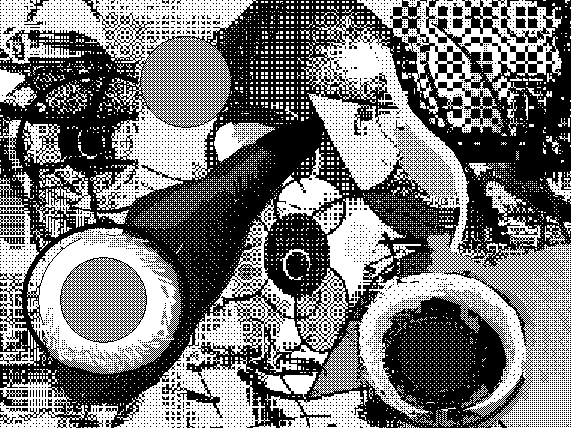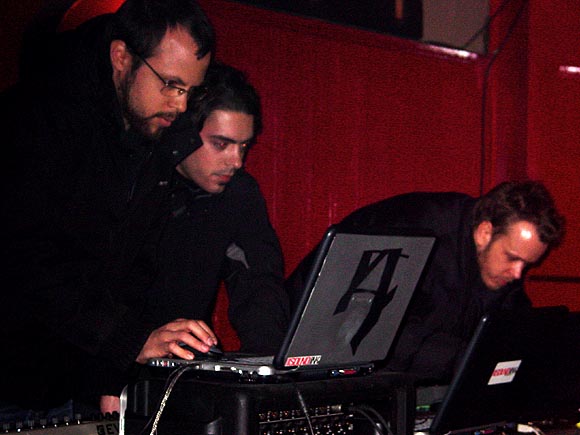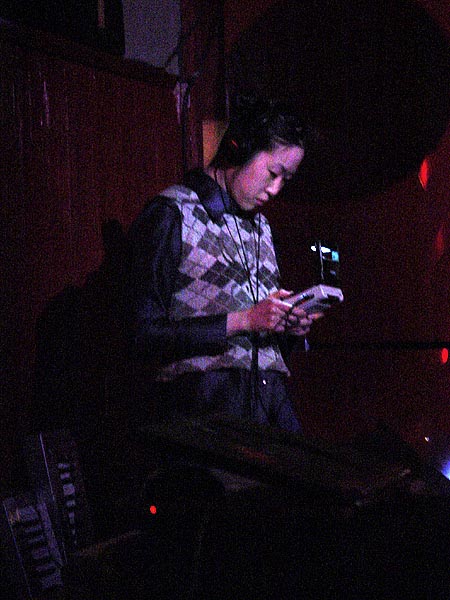View current page
...more recent posts
From Leonard Maltin's movie guide, 2010 edition:
Assault on Precinct 13: Before Sunrise (2005) ** D: Jean-Francois Richet. Ethan Hawke, Laurence Fishburne, Maria Bello, Ja Rule. Overwritten remake pads out John Carpenter's lean, mean low budget 1976 thriller Assault on Precinct 13 with Hollywood psychobabble and a host of added characters meant to broaden its appeal. Permanently perplexed slacker Ethan Hawke bores and overacts in the Austin Stoker role as a cop who must defend an abandoned police precinct building (and its accidental inhabitants) from a military-style assault by mysterious foes. Still playing Morpheus from the Matrix movies, Laurence Fishburne occasionally amuses as a prisoner temporarily housed in the building who joins in its defense.The original movie, a pulp masterpiece of the type that the Hollywood cool kids admire but always ruin by trying to recreate, flopped on release, reportedly running for 24 hours in a seedy Times Square theatre, but gradually acquiring a rep as Carpenter's star continued to rise with Halloween, The Thing, and so forth. A George Romero-style zombie film with a street gang as the zombies, the first Assault introduced one trapping of the urban crime genre that was years ahead of the curve: too broke to hire a composer, Carpenter invented the cool synthesizer-and-rhythm box score, of the type that later dominated the '80s--a minimal funk machine with a bass line we would now call "classic electro." (Carpenter says he was influenced by Led Zep's "Immigrant Song," which shorn of its viking narrative is proto-techno in its hypnotic simplicity). The Assault music is so good, still, that the DVD gives you an option to hear it with dialogue and sound effects muted.
Partly due to that hip-but-sinister score, partly due to Carpenter's narrative economy and budget-driven sense of visual priorities, and partly due to the '70s zeigeist of "society in freefall," the first movie gives you a sense of "being pulled towards some inevitable doom," as one fan put it. Slate critic David Edelstein, who generally sneers at Carpenter and still twits him 30 years later for the shocking child murder that begins the first Assault, praises the film's atmosphere of "free floating malevolence." Although Carpenter claims no sociological intent for the movie, one senses throughout that it is urban anomie and neglect as much as a relentless gang vendetta that besieges the characters inside a soon-to-be-closing police station, with no cavalry in sight.
The remake does away with the difficult, unforgettable opening murder scene and shifts the villainy from a street gang to "crooked cops," which is a cliche, but it does give the film its only subversive juice. Over the course of its too-long running time, the film's added assortment of Offbeat Ghetto Characters--or so the scriptwriters seem to imagine them--waste a lot of gendarmes in scary high tech riot gear and the audience is encouraged to root for that. In a time when our police forces seem bent on remaking themselves into the military wing of the Republican Party, and in anticipation of their eventual merger with private security contractors currently guarding the elite (or just if you hate armed authority figures), the counter-assault has a certain cathartic appeal, outside the film's lame blaxploitation-with-Ethan-Hawke context.
UPDATE: J. Hoberman, a fan of the original movie, likes the remake.
Chris Ashley, Untitled (Transit, Windows, Ribbons), 2005, HTML, 500 x 460 pixels
Most Condescending Art Critic Comment of 2005 (So Far)
Peter Schjeldahl, The New Yorker:
A leading exegete of theory on the scene, Craig Owens, hatched the keenest critique of East Village art, in one word: "Puerilism." (Why the slur's victims didn't promptly embrace it, on the model of "Fauvism," I don't know; maybe they lacked ready access to a dictionary.)More.
A bit slow in getting around to this, but please listen to the marvelous "Rodchenko in My Bauhaus," by Candy Chang [5.6 MB .mp3 - download is from the Red Antenna site which handles Chang's music]. This lascivious come-on set to a slinky electro beat abounds with visual art and design references, and is possibly the only song you will ever hear that rhymes "Moholy-Nagy" with "love collage," or entices the listener to "put your function in my form." You can check out other music by Chang at her website; songs are available for download from her Typography EP (the instrumentals "Bravo Futura" and "Telegram 41"), and the Impulse Sealer 12" ("My Radio Is So Casual"). I first learned about Chang hearing "Rodchenko" on Red Antenna's New Electric Policy 2 CD (which I play a lot), one of the last things I bought at Throb before it crashed and burned.
It must be said, I don't want New York electro to be over, because it's a great contribution to the world and a quantum leap over the old synthpop and new wave dance music, in that the technology is so much better now, and 20 years' knowledge of how to push amplified sound around makes all the difference. Anyway, sorry for that rant, be sure to check out those Chang instrumentals.
I cut another minute out of "Blues for DG" [mp3 removed], and it's better now, I think. Also, the piano version of "Reel for Omniverters" ain't half bad for a guy playing with three arms: [mp3 removed]. The synth version is here, possibly to be revised with better synths.

moody + jimpunk + rosenquist = cubism, large bits, violence
I received the following email about Jude Tallichet's upcoming show at Sara Meltzer and it's so brilliantly concise I present it intact:
Dear Friends,In the past Tallichet has done perfectly crafted models of historically resonant architecture--such as knee-high versions of the main Brasilia buildings painted jet black--with her own electronic music playing inside of them. For this show, the email above rather gets it across: Ezra Pound couldn't have done a better job of conjuring an art experience with a few well chosen words (on second thought, Donald Judd's straightforward descriptions are probably more on point). Linguists talk of "performatives," which, according to wikipedia are expressions such as 'I nominate John to be President', 'I sentence you to ten years imprisonment' or 'I promise to pay you back,' where the action the sentence describes is performed by the sentence itself. The paragraphs above almost transparently "perform" the art because you can see and hear it so clearly. Now to measure the show against the words.
January 20, a day that will live in infamy (2nd inauguration of youknowwho), also happens to be the opening date of my exhibition "Hiding in Plain Sight" at the Sara Meltzer Gallery. 516 West 20th Street, from 6-8pm. The show will run until February 19.
"Hiding in Plain Sight" will occupy Room 01, Room 02 and the Video Wall, and will feature four sculptures: a bear rug cast in aluminum, a bale of hay cast in bronze, a wagon wheel made of mirrors, and a campfire made of neon lights and plastic. I have also composed a sound track featuring the merged sounds of auctions and gregorian chants, and a video wall featuring "westerns" shot in Fort Lee, New Jersey during the early 20th century by Thomas Edison.
I hope you can see the show!
UPDATE, Jan. 20: Tallichet's art is carefully made and impressive to behold, so as well as you can visualize the above description, that's what the show looks like. We are somewhat in Koonsian scuba tank territory here, only with a theme of ersatz Americana perfectly timed for the swearing-in of an ersatz President. The essential fraud of westerns filmed in New Jersey combines with the PT Barnum curio in a series of deadpan surrealist audio, video, and sculptural works. Through the visual rhetoric of late Minimalism (in the exhibit's spare presentation and determined craftmanship), the art world is also implicated in this scheme of bogus experience. Excellent, thoughtful show.
Photos from the Wrecking Ball [dead link], a twice-monthly "Evening of Electronic Musical Debauchery and Mayhem" in Brooklyn. Top, Heat Sensor, three intense guys with laptops, who've gotten some ink recently working with hiphoppers MF Doom and King Ghidra. All glitchy texture and monotonously elegant looped beats, this was hard to stay focused on, except for occasionally ear-tickling Kruder & Dorfmeisterish atmospherics. Middle photo, Bubblyfish, incorporating 8-bit/gameboy [dead link] sounds organically into danceable techno. This could be pop music in Europe, and that's meant as a compliment (because I hear they have techno on the radio over there, and not just in car commercials). Her final number--begun and ended with a childlike pecking out of "Good King Wenceslas"--especially shined. Not pictured because the photo was overexposed: Man From Planet Risk's jenghizkhan, the most dissonant and "art," as opposed to arty, entry in the program. He had beats, but also skronky sounds resembling giant uncoiling springs overlapping in reverberating, Stockhausenlike crescendos. Also, like Bubblyfish, some pretty melodies wafting into the mix.
Heat Sensor
Bubblyfish (and speckly texture on the photo--sorry)


